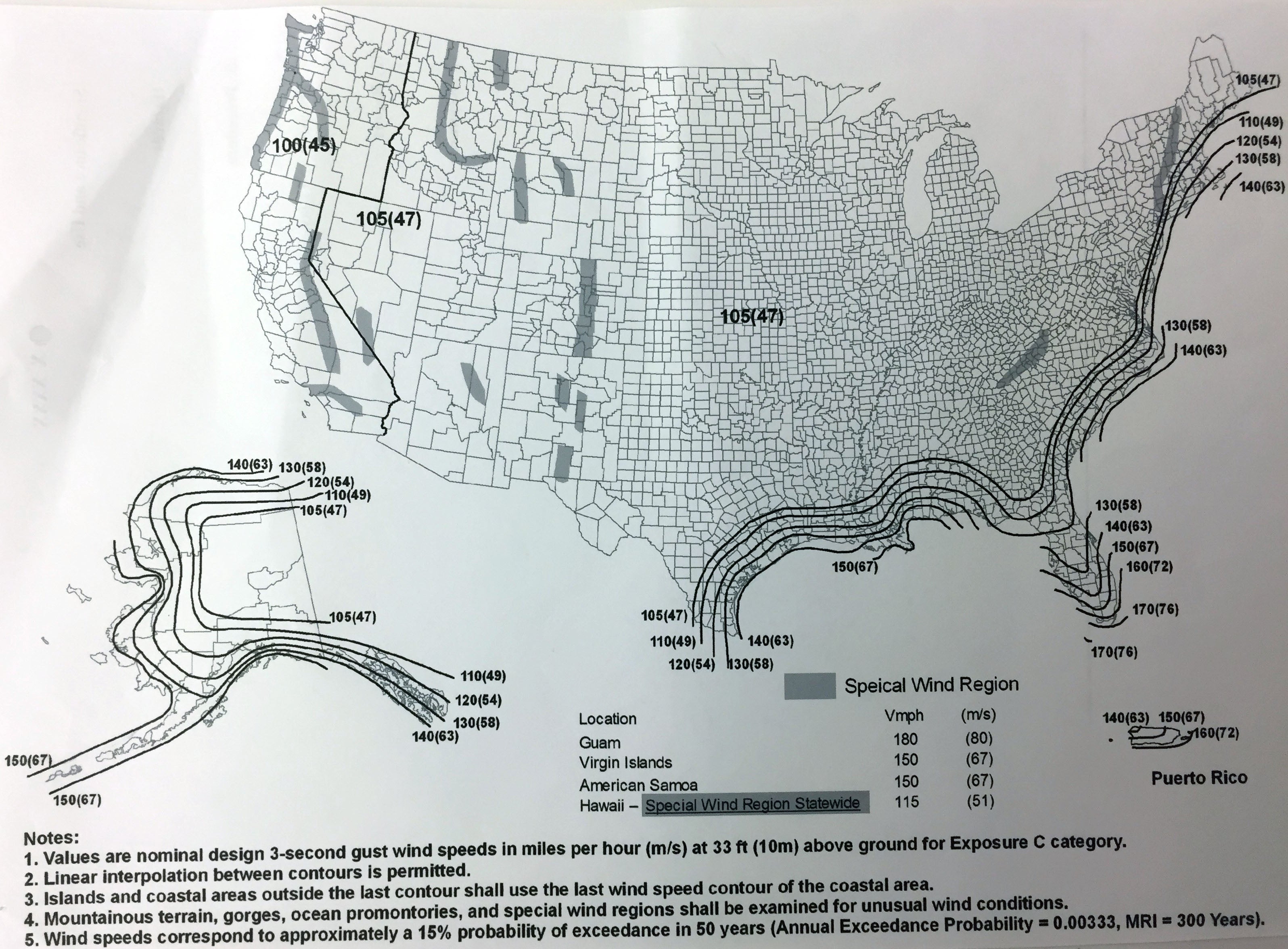Tools of the Trade: Wheatland Wind Load Fence Post Size and Spacing Calculator
Will the wind blow down a fence? It sure will! In my many years of experience in the fence industry, I have visited countless sites and seen photos of fences bent anywhere from 30 degrees or more to just about flat to the ground. One time I visited a tennis court site at Montauk Point on Long Island; unfortunately, the wind screens were left on during a storm and I couldn’t believe my eyes…one 120-foot side of the court fence was blown a full 60 feet to the other! The post, including the massive footings were actually pulled out of the sandy ground.
 I offer some background information and a solution to designing a fence to withstand expected wind gust. The American Society of Civil Engineers and Structural Engineering Institute for many years has published an extensive technical document, “Minimum Design Loads for Buildings and Other Structures”. The document is reviewed and updated every 6 years, the most recent designation, “ASCE/SEI 7-10”. ASCE/SEI 7 is and has been an integral part of the building codes in the United States for years. A good portion of the publication is dedicated to wind load on buildings and structures which is based on decades, as much as 50 years, of recording actual minimum 3 second wind gust for all areas of the United States. The recorded wind gust data is plotted on maps of the United States so one can see the expected wind gusts in a particular area. The maps show 105 MPH wind gusts for most of the United States and therefore 105 MPH gusts are most often used for the minimum structural design of buildings and other structures. Naturally, fence is subjected to wind gusts and therefore more and more contract specifications and codes require the fence to be designed to structurally meet the local wind load criteria.
I offer some background information and a solution to designing a fence to withstand expected wind gust. The American Society of Civil Engineers and Structural Engineering Institute for many years has published an extensive technical document, “Minimum Design Loads for Buildings and Other Structures”. The document is reviewed and updated every 6 years, the most recent designation, “ASCE/SEI 7-10”. ASCE/SEI 7 is and has been an integral part of the building codes in the United States for years. A good portion of the publication is dedicated to wind load on buildings and structures which is based on decades, as much as 50 years, of recording actual minimum 3 second wind gust for all areas of the United States. The recorded wind gust data is plotted on maps of the United States so one can see the expected wind gusts in a particular area. The maps show 105 MPH wind gusts for most of the United States and therefore 105 MPH gusts are most often used for the minimum structural design of buildings and other structures. Naturally, fence is subjected to wind gusts and therefore more and more contract specifications and codes require the fence to be designed to structurally meet the local wind load criteria.
Wheatland has made this very complicated structural design process easy by developing and including within their website an interactive Fence Post Wind Load Calculator. Just select the height, wind speed, estimated post size, mesh configuration and a few other items and the proper spacing for the post selected will be calculated for you. There is even a default for solid fence which is described within ASCE/SEI 7-10 as any surface area having greater than 70% closure such as privacy slats and wind screens. Three calculators are on the website: chain link, welded wire mesh and expanded metal. When you visit the wind calculators make sure to read the instructions and view the map.
The calculators were developed, with permission, using the Chain Link Fence Manufacturers Institute, Chain Link Fence Wind Load Guide for the Selection of Line Post and Line Post Spacing, WLG 2445. The CLFMI document was developed by a professional engineering firm, using ASCE/SEI 7-10.
